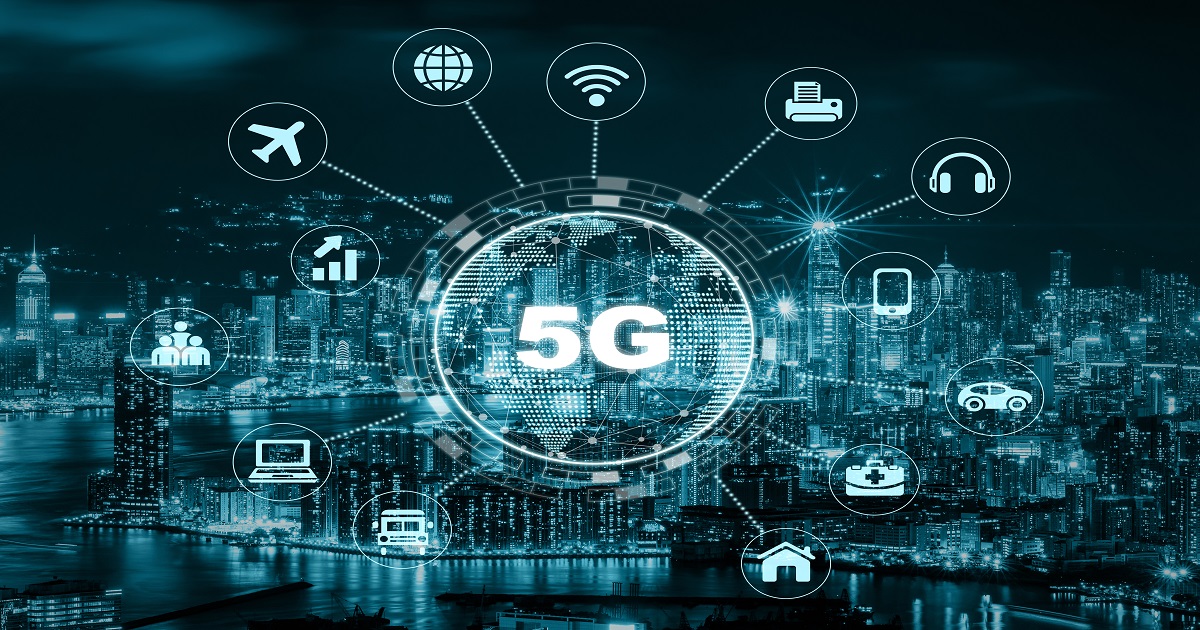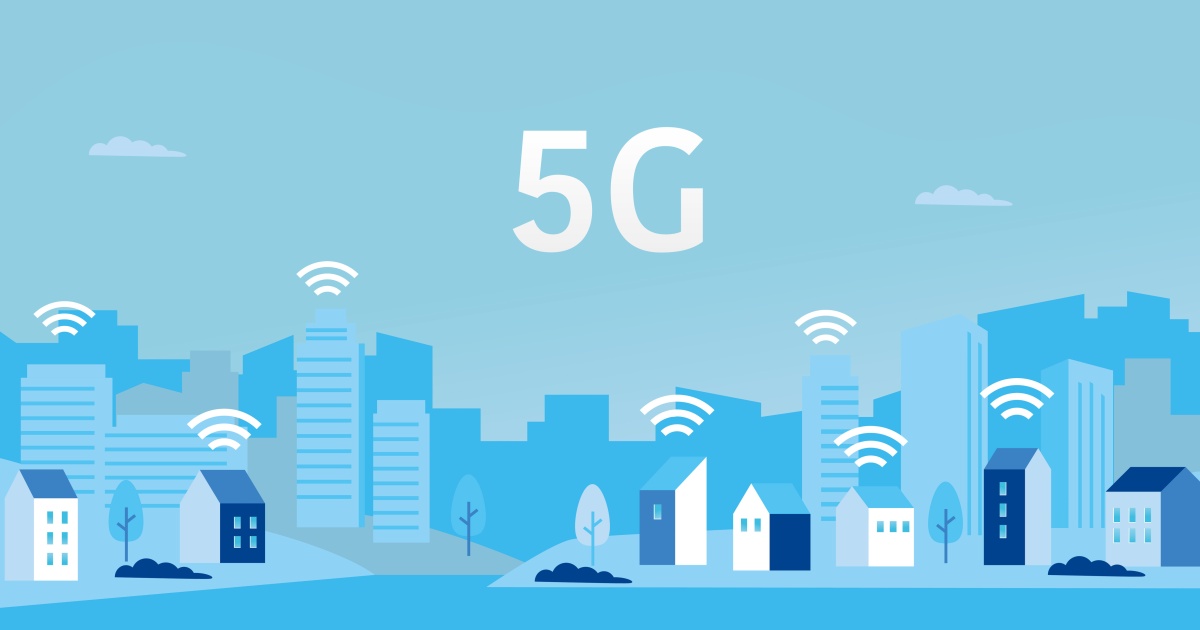The 5G mobile network is the next step in advanced telecommunications and other internet of things (IoT) technologies, delivering quicker speeds and increased access to cellular networks around the world. Not only does 5G improve service for mobile phone use, it enables the effective deployment of exciting new technology applications that use sensors and communication across a distance like drone delivery, self-driving cars, robotics and more.
More than doubling peak data transfer speeds than its predecessor, 5G makes it possible for cellular networks to service many more connected sensors per square mile than ever before. In a world where IoT is becoming increasingly adopted by organizations to realize efficiency gains, open up new revenue streams, and improve bottom lines, there’s increased urgency to accelerate 5G deployment.
As data usage trends continue to drive upward and more generous data plans lower revenues per GB, telecom companies are seeking more cost-effective network technologies at the point they interface with users. These include small cell networks and distributed antenna systems, which use the millimeter wave (mmWave) frequencies to deliver super-fast speeds. But this also requires the more dense installation of devices per square mile.
Why is this necessary? Take the last mile delivery problem in e-commerce as an example. Shipping a package across the company to a distribution center may be an easy task, but the final journey to the customer is complicated by the need to optimize courier journeys, navigating different housing arrangements and incidences of failed deliveries. It’s a similar issue with 5G.
Implementing 5G networks requires a vast amount of expensive infrastructure upgrades that are often labor intensive. In fact, by 2030, mobile carriers are expected to spend over $1.1 trillion in operating expenses alone for 5G infrastructure due to labor costs and other maintenance, according to IHS MarkIT.
To solve the complications inherent in 5G delivery, many telecom companies are turning to signal repeaters, which are devices designed to enhance 5G network coverage and improve service in hard-to-reach areas and dense urban environments. Doing this helps accelerate “time to revenue” so there’s a lot of incentive to deploy this infrastructure, but it doesn’t come without challenges.
Combining the high cost with the other hurdles associated with rapid 5G deployment – limited signal range, line-of-sight requirements, and poor building penetration – telecom companies are weighing their options and deciding on the most effective methods of implementation. Although both are designed to extend coverage at mmWave, compared to small cells, repeaters don’t require a fiber connection, are smaller in size and consume less energy. Thus, repeaters are falling into favor with major telecom companies like Verizon. With advancements in wireless power technology, repeaters are also able to be deployed more efficiently and cost effectively – so telecom companies and end-users can start realizing the benefits of 5G faster.
Let's take an in-depth look at how wireless power can improve repeater devices and accelerate 5G adoption.
Reducing interference and costly infrastructure overhauls
5G services should provide reliable data and power transfer across all kinds of terrains and environments, yet interference due to windows, walls, and other surfaces often restricts or delays 5G deployment. Drilling through surfaces is often a costly and time consuming solution to interference related problems, leading companies to look for alternative solutions. Wireless power transmission enables companies to reduce the need for wires and drilling by connecting repeaters wirelessly through a range of surfaces including building walls, glass, non metallic mediums, as well as highly metallic environments. Wireless power technology has advanced to achieve much higher power levels and can self-calibrate over distance to adapt to different thicknesses of walls and windows, and even transmits power through Low-E glass, which is the new standard for sustainable construction.
Enabling self-installation of repeaters
It is not economically feasible for telecom companies to send out workers to install repeaters for every 5G subscriber. If they did, the cost would have to be passed on to subscribers which would detract from subscriber volume. Therefore, self-installing subscriber repeaters is necessary for an operator to meet its business case for deploying 5G services. Because repeaters with wireless power don’t require drilling or cabling, they can be easily installed on building walls by the end-user. This type of installation dramatically reduces the network operator’s capital expenses and operating expenses per customer.
The potential of 5G to transform industries and improve our quality of life is immense, with applications spanning manufacturing, smart cities, urban mobility, medical technology, and more. Wireless power holds the key for faster adoption with easy, low-cost repeater installation.
About the author: Itay Sherman is the chief technology officer at Powermat . He has over 25 years of experience serving as CTO in both large companies and startups. From 2011 until 2017, he managed consulting firm ISC, providing technology and IP consulting services to tier one technology companies. He also served as CTO of the Power Matters Alliance, a global, not-for-profit industry organization working to advance a set of standards and protocols for wireless power transfer. Previously, Itay had served as CTO of Modu, a startup that pioneered the concept of modular handsets. Prior to that, he was CTO of the Mobile Connectivity Solution BU at Texas Instruments, and held leading positions in Texas Instruments WLAN BU and Libit Signal Processing. Itay holds an MSc in Biomedical Engineering and a BSc in Electrical Engineering, both with honors, from Tel Aviv University.
Explore the disruption and opportunity 5G and IoT are creating at IoT Evolution Expo and 5G Expo , both taking place in Ft. Lauderdale, Florida, June 21-24, 2022, part of the #TECHSUPERSHOW experience. Plus, discover advances in edge computing, machine learning and AI; and understand the role these technologies play in ushering in the new age of digital transformation. Participate in more than 100 business and technology conference sessions, workshops and keynotes, meet key suppliers in the exhibit hall, and network with prospective partners and customers during the many networking and other special events during the week.
Edited by
Erik Linask





